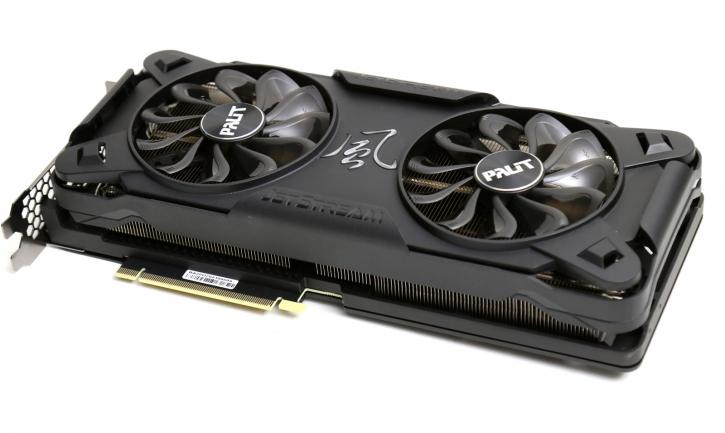
Palit GeForce RTX 3070 JetStream OC review
We benchmark, review and thus test the GeForce RTX 3070 from a board partner that has been among us for a long time, our friends from Palit released their new GeForce RTX 3070 Jetstream OC. We'll seat it onto our test system to see how well this product performs. Palit overhauled the look and design for the Jetstreams series, and it looks dignified in a darkened aesthetic design. This product will sit spot on GeForce RTX 2080 Ti performance levels and, in due time, will be its replacement.
On September 1st of the year, 2020 NVIDIA declared three initial Ampere graphics cards in its inaugural launch wave. A week before announcements, specifications of the GeForce RTX 3070, 3080, and 3090 took a twist; the shader core count mysteriously doubled up from what everybody expected. The GPUs are fabricated on an 8nm node derived from Samsung. This process is a further development of Samsung's 10nm process; no EUV is applied in production just yet. The first wave of announcements would see the GeForce RTX 3080 and 3090 being released first, and, as a bit of a surprise, the GeForce RTX 3070 would be arriving in roughly the same timeframe as well. The initial launch of Ampere for consumers entails the GeForce RTX 3070 8GB GDDR6, RTX 3080 10GB GDDR6X, and what we test today, the 24GB GDDR6X based premium flagship, the mighty mo, the GeForce RTX 3090. The lineup nearly doubles ray-tracing performance with Gen2 ray-tracing cores and 3rd iteration Tensor cores. These cards will all be PCIe 4.0 interface compatible and offer HDMI 2.1 and DisplayPort 1.4a, but most importantly is that exorbitant Shader processor count (referred to as CUDA cores by NVIDIA), passing the 10K marker for the flagship product, nobody... not even us, saw that one coming. With roughly half that shader processor count, we now meet the NVIDIA GA104 GPU, initially to be used solely in the GeForce RTX 3070 graphics cards. And despite a lower segmented card, it still holds a big GPU die; the 3070's GA104-300-A1 GPU is firing up over 17 billion transistors. To compare, a GeForce RTX 3080 is listed at 8,704 Shader cores, and the GeForce RTX 3090 (GA102) has 10496 Shader cores. In this review, we'll check out the Founder edition GeForce RTX 3070, paired with 8GB of GDDR6 graphics memory. A product that runs a boost clock of 1730 MHz and the sheer muscle power makes you smile, a lasting one.
| Model | Base Clock (MHz) | Boost Clock (MHz) | VRAM Base Clock (MHz) | VRAM Effective Datarate (MHz) | Max Power %left |
| GeForce RTX 3070 | 1500 | 1730 | 1750 | 14000 | 109 |
| ASUS TUF RTX 3070 Gaming | 1500 | 1815 | 1750 | 14000 | 112 |
| PALIT RTX 3070 JetStream OC | 1500 | 1815 | 1750 | 14000 | 122 |
| MSI RTX 3070 Gaming X TRIO | 1500 | 1830 | 1750 | 14000 | 104 |
The Palit GeForce RTX 3070 JetStream OC is fitted with that new NVIDIA GA104 GPU; it has a proper 5888 shader cores activated and is paired with 8GB GDDR6 graphics memory. Palit provided the card with a semi-passive design; the dual fans start to spin and cool once the GPU warms up. You'll notice it has 2x 8 (6+2) pin power connectors. The card is rated with a 270W power draw, a value that is 220W for the reference design. This indicates it will perform a notch better at default clocks as Palit allows a bit more power to boost performance. Weighing in at close to 1250g, this graphics cards is sized a little on the big side, 304 x 136 x 60 mm. The out of the box boost clock for this product is a nice 1815 MHz (where 1730 MHz is the FE reference clock), and it's memory clocked at reference 14 Gbps (14 Gbps reference). But hey, judge for yourself, let's start up this review, shall we?